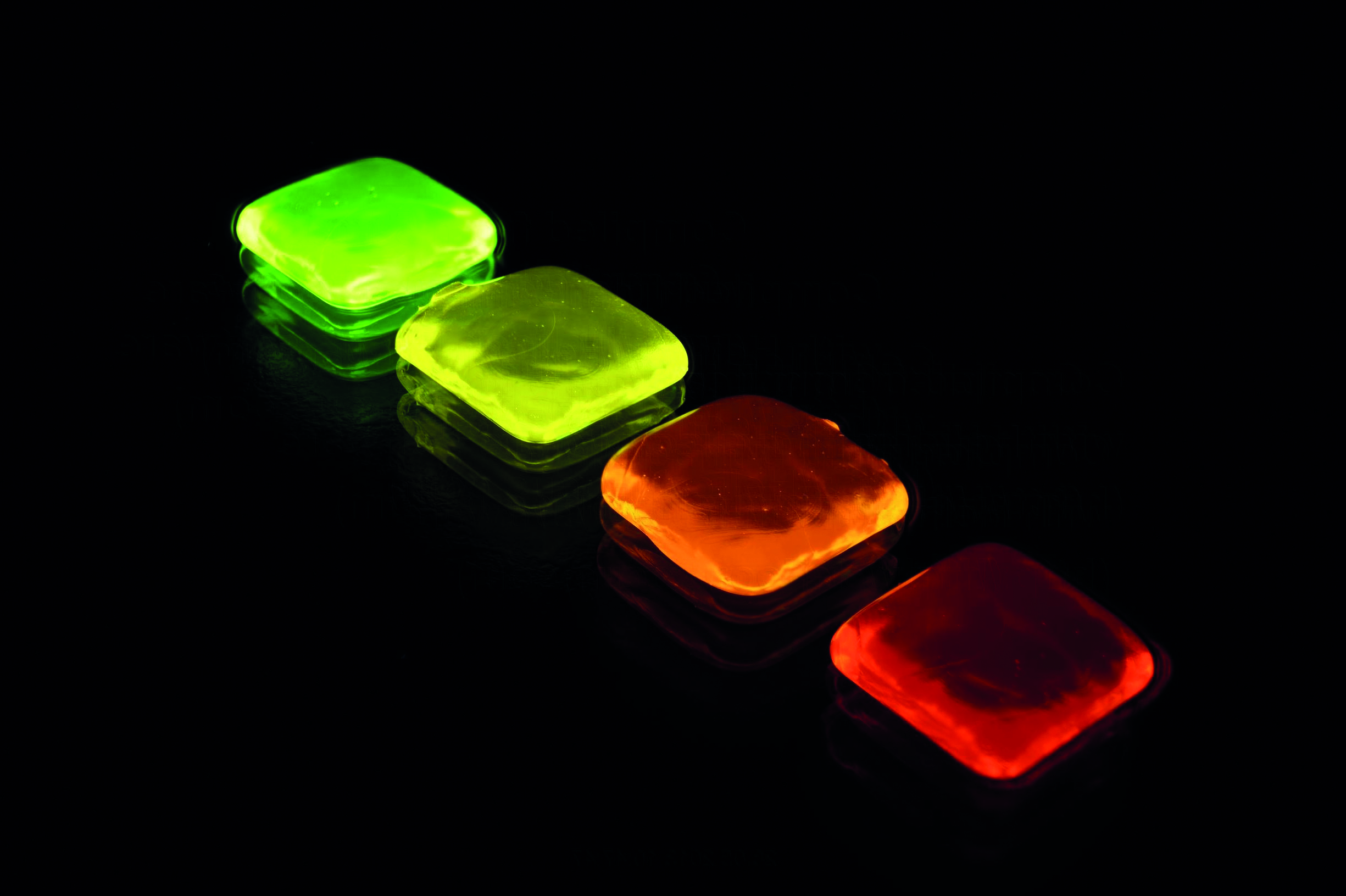Light-emitting diodes (LEDs) are the future of lighting. Compared to conventional light bulbs and energy-saving lamps, modern high-performance LEDs offer enormous advantages with regard to efficiency, compactness, life and environmental protection. However, due to the combination of a blue LED with a yellow-emitting phosphor, compared to conventional lighting elements, white LEDs have »cold white« color rendering due to the lack of red fraction. In addition, some of the phosphors used to date are degraded due to the heat generated by the high operating currents.
New phosphors based on luminescent lenses doped with rare earths are intended to increase the life of white light-emitting diodes considerably and ensure long-term stable color impression. The lenses and rare earths are characterized by increased chemical and thermal resistance and element-specific emissions. Through suitable selection and combination of several rare earths, it is possible to set a wide range of colors and color temperatures.
The difficulty with white-light LEDs lies in finding the right combination of LED and phosphor, so that a white light impression is produced. This is evaluated using the so-called CIE diagram. The light should be as near as possible to the white light point E. To achieve this, the emission of the phosphor and the emission of the blue LED must be opposite each other. Terbium and europium in particular are very good for use in lighting. Under ultraviolet (UV)/blue light excitation, both have intensive emission in the green (Tb) and red (Eu) spectral range respectively. By mixing both rare earths the entire spectrum from red to green can be reproduced.
